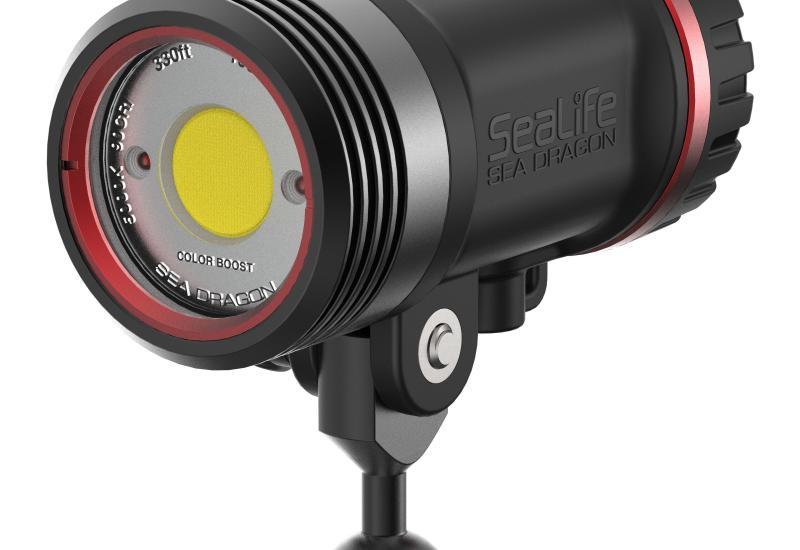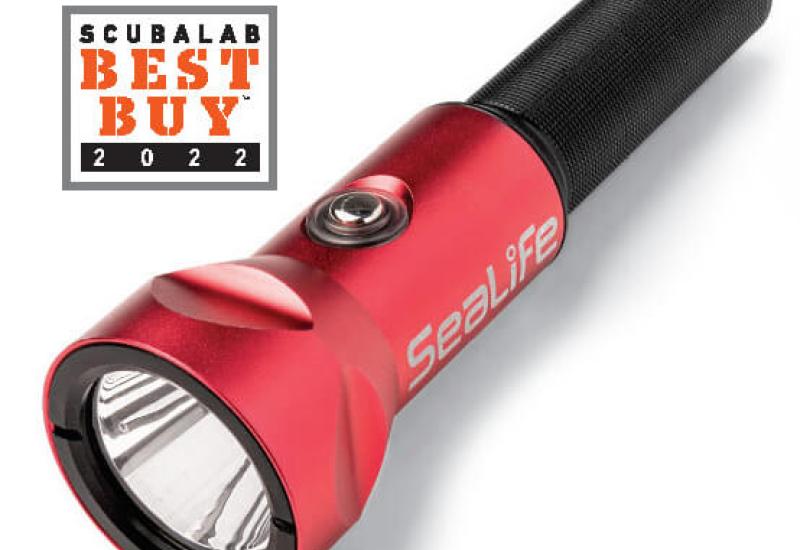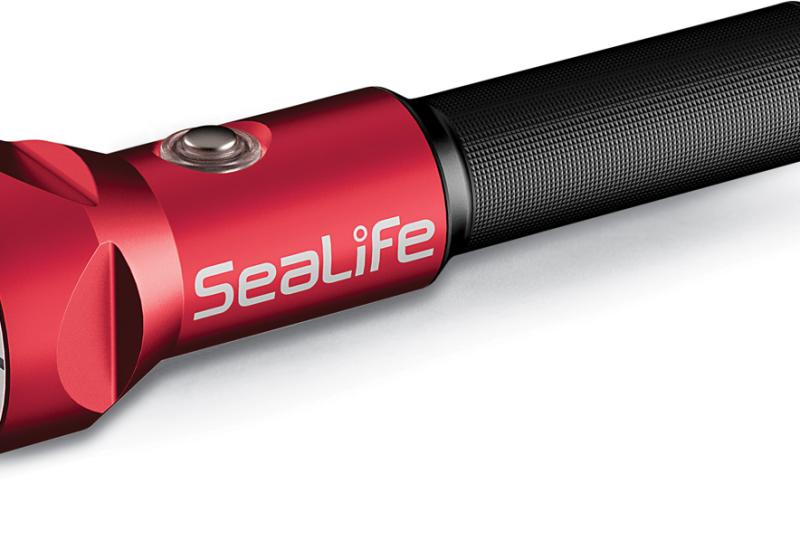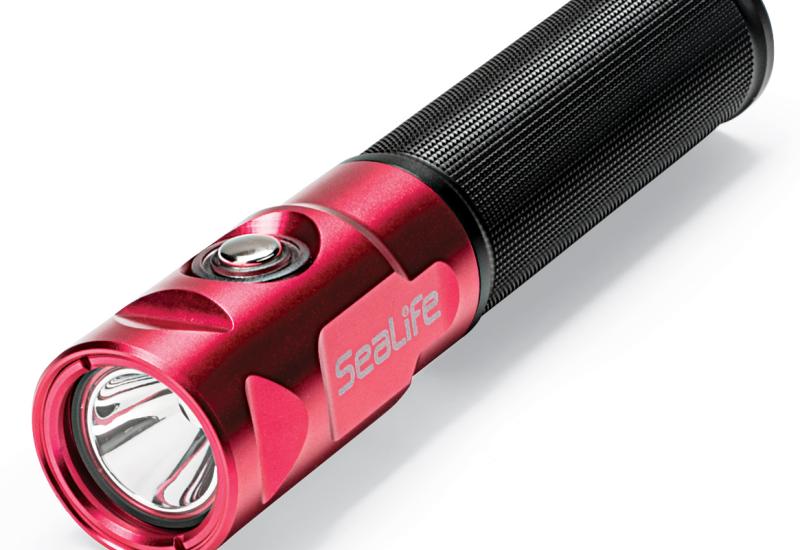Best Tools for Macro
Q: Many of the photos I see in dive magazines are shot with wide-angle lenses. I realize it is important to see the "big picture" to know if the destination pictured is somewhere you may want to go diving, but once I'm there, I am more captivated by the small stuff. My personal interest is in macro. I have been shooting macro for years with a Nikonos and extension tubes, but some of the creatures I want to capture get scared off by the framers. Can you give me some hints about shooting macro with an SLR? Is it worth the investment in a new camera system?
Shirley Coursey
VIA E-MAIL
I can't really tell you whether a new camera system is "worth the investment," because there are so many personal and equipment variables that will define your individual criteria. But I can address the issue of using extension tubes versus single-lens reflex for macro imaging.
First of all, let's define the advantages and disadvantages of your present system, the extension tube on a Nikonos camera:
Extension Tube: Advantages
-
An extension tube is typically an inexpensive first accessory with a viewfinder-type amphibious camera. You are using a Nikonos camera with what is essentially an O-ring-sealed piece of machined aluminum that fits between the camera body and the lens, thereby changing the focal length of your lens and making it focus much closer than it would otherwise. Then you use a goalpost-style framer to tell you how far away a subject should be to be in sharp focus, and to define the field of focus. Goalpost framers and accessory lenses are also available with other underwater camera systems, including the Pioneer SeaLife, Ikelite Auto 35, and the Sea & Sea MX-10 and Motor Marine II-EX.
-
They are very easy to use. Place the subject within the framer, point and shoot.
-
Camera settings are likewise simplistic. For the Nikonos, usually f-22 and minimum focus.
-
An extension tube does not require putting an eye to a small viewfinder on a camera. They are extremely easy to operate, even for novice divers.
-
They are available in different levels of magnification, including 1:1 (lifesize), 2:1 (twice-lifesize), 1:2 (half-lifesize), and with some tube manufacturers 1:3 (one-third lifesize). Tubes are available for both 35mm and 28mm lenses.
Extension Tube: Disadvantages
-
There's no single-lens-reflex viewing, so composition is more approximate than with a housed camera.
-
With the Nikonos system, once you put the extension tube on the camera, it can't be removed under water without flooding the system. This does not apply to the Sea & Sea, Pioneer and other systems that utilize an external close-up lens, for these can indeed be added and removed while under water, thereby adding significant compositional latitude on a single dive.
-
Any subject that is intolerant of a close approach is likely to be scared off by the framer. That limits effective extension tube use to relatively sessile organisms that can't swim away from you, or at least those that move rather slowly. Yes, there are shooters who have captured skittish marine life like fairy basslets or yellowhead jawfish with framers, but I've never had the patience to do so. Of course this is the primary point of your inquiry, so let's examine what an SLR system brings to the world of macro imaging.
Extension Tube or SLR?
The images I'm using for demonstration here come from a recent trip to the Komodo Islands in Indonesia. All were taken with a housed single-lens-reflex digital camera (Nikon D1X), but the observations regarding capture techniques are relevant to housed film SLRs, as well as the new breed of prosumer digital cameras that display the lens's view on an LCD screen rather than through a viewfinder. Whether the viewfinder is optical or electronic, these cameras allow the photographer to compose and confirm fine-focus from a distance, without the intrusion of a wire framer. Some could have been taken with a Nikonos, while others absolutely could not have been.
PYGMY SEAHORSE
|||
|---|---|
|  |
|
Here is a subject about the size of a skinny pea that makes a living hiding camouflaged amid coral polyps. Just finding the seahorse is challenge enough, and then they make it even harder by constantly turning away from the photographer. With magnification levels of 1:1 and greater, the depth of field is so small and the creature so elusive that debate rages as to whether tubes or SLRs are the way to go. The tube proponents use 2:1 magnification and gently try to coax the pygmies into the framer. SLRs are less intrusive, but seeing the pygmy with a naked eye, and then finding it again through a groundglass is a slow and frustrating process.
TOOL OF CHOICE: Either.
NUDIBRANCH
|||
|---|---|
|  |
|
As you can see here, many nudibranchs are the exact right size to fit in a framer, and they are not swift enough to dart away. However, some subtle behaviors such as the use of the mantle to aid locomotion as is evident in this photo might not be captured with a framer. There is no doubt that the intrusion of the framer will alter marine life behavior to some extent, whether it be forcing a Christmas tree worm back into a hole or some other evasive action.
TOOL OF CHOICE: Either.
HARLEQUIN GHOST PIPEFISH
|||
|---|---|
|  |
|
The harlequin ghost pipefish looks this weird for a reason. By effectively mimicking the shape of a gorgonian stalk, it can hide in ambush for its prey, and likewise hope for invisibility from its predators. It takes a very stealthy approach to coax the head of such a fish into a framer, because it's likely to move to a safer refuge somewhere totally inaccessible. But the SLR allows a bit of distance from the fish, especially with a telephoto-macro like the 105mm Micro-Nikkor. 1:1 magnifications can be achieved with this lens from a distance of about 10 inches.
TOOL OF CHOICE: SLR.
DAMSELFISH
|||
|---|---|
|  |
|
These damselfish are seen hovering above the staghorn coral--until you move close enough to try to get a photo. Then they dart into the branches of the coral to hide. This is the epitome of photo-frustration with a framer, but with a bit of patience and a reasonably bold damselfish, no problem with a macro-tele on an SLR.
TOOL OF CHOICE: SLR.
SEA APPLE
|||
|---|---|
|  |
|
Let's say you see a subject like the sea apple pictured here. It is sessile and would be easy to capture with the right-sized framer in its most traditional view, but to get a more intimate vision of the arms pulling nutrients into the sea apple mouth would be virtually impossible with a framer obstructing the action.
TOOL OF CHOICE: Either, but with an advantage to SLR.
MUREX
|||
|---|---|
|  |
|
A shell on the sandy seafloor seems an obvious choice for a macro framer. It can't swim away and the plane of focus is easy to control. But what if you don't have the right size tube and framer installed on your camera? Then you can change your photographic vision to fit the framer of course, but the SLR allows greater latitude in composition in addition to the anti-intrusion consideration.
TOOL OF CHOICE: Either, but with an advantage to SLR.
Q: Many of the photos I see in dive magazines are shot with wide-angle lenses. I realize it is important to see the "big picture" to know if the destination pictured is somewhere you may want to go diving, but once I'm there, I am more captivated by the small stuff. My personal interest is in macro. I have been shooting macro for years with a Nikonos and extension tubes, but some of the creatures I want to capture get scared off by the framers. Can you give me some hints about shooting macro with an SLR? Is it worth the investment in a new camera system?
Shirley Coursey
VIA E-MAIL
I can't really tell you whether a new camera system is "worth the investment," because there are so many personal and equipment variables that will define your individual criteria. But I can address the issue of using extension tubes versus single-lens reflex for macro imaging.
First of all, let's define the advantages and disadvantages of your present system, the extension tube on a Nikonos camera:
Extension Tube: Advantages
An extension tube is typically an inexpensive first accessory with a viewfinder-type amphibious camera. You are using a Nikonos camera with what is essentially an O-ring-sealed piece of machined aluminum that fits between the camera body and the lens, thereby changing the focal length of your lens and making it focus much closer than it would otherwise. Then you use a goalpost-style framer to tell you how far away a subject should be to be in sharp focus, and to define the field of focus. Goalpost framers and accessory lenses are also available with other underwater camera systems, including the Pioneer SeaLife, Ikelite Auto 35, and the Sea & Sea MX-10 and Motor Marine II-EX.
They are very easy to use. Place the subject within the framer, point and shoot.
Camera settings are likewise simplistic. For the Nikonos, usually f-22 and minimum focus.
An extension tube does not require putting an eye to a small viewfinder on a camera. They are extremely easy to operate, even for novice divers.
They are available in different levels of magnification, including 1:1 (lifesize), 2:1 (twice-lifesize), 1:2 (half-lifesize), and with some tube manufacturers 1:3 (one-third lifesize). Tubes are available for both 35mm and 28mm lenses.
Extension Tube: Disadvantages
There's no single-lens-reflex viewing, so composition is more approximate than with a housed camera.
With the Nikonos system, once you put the extension tube on the camera, it can't be removed under water without flooding the system. This does not apply to the Sea & Sea, Pioneer and other systems that utilize an external close-up lens, for these can indeed be added and removed while under water, thereby adding significant compositional latitude on a single dive.
Any subject that is intolerant of a close approach is likely to be scared off by the framer. That limits effective extension tube use to relatively sessile organisms that can't swim away from you, or at least those that move rather slowly. Yes, there are shooters who have captured skittish marine life like fairy basslets or yellowhead jawfish with framers, but I've never had the patience to do so. Of course this is the primary point of your inquiry, so let's examine what an SLR system brings to the world of macro imaging.
Extension Tube or SLR?
The images I'm using for demonstration here come from a recent trip to the Komodo Islands in Indonesia. All were taken with a housed single-lens-reflex digital camera (Nikon D1X), but the observations regarding capture techniques are relevant to housed film SLRs, as well as the new breed of prosumer digital cameras that display the lens's view on an LCD screen rather than through a viewfinder. Whether the viewfinder is optical or electronic, these cameras allow the photographer to compose and confirm fine-focus from a distance, without the intrusion of a wire framer. Some could have been taken with a Nikonos, while others absolutely could not have been.
PYGMY SEAHORSE
Here is a subject about the size of a skinny pea that makes a living hiding camouflaged amid coral polyps. Just finding the seahorse is challenge enough, and then they make it even harder by constantly turning away from the photographer. With magnification levels of 1:1 and greater, the depth of field is so small and the creature so elusive that debate rages as to whether tubes or SLRs are the way to go. The tube proponents use 2:1 magnification and gently try to coax the pygmies into the framer. SLRs are less intrusive, but seeing the pygmy with a naked eye, and then finding it again through a groundglass is a slow and frustrating process.
TOOL OF CHOICE: Either.
NUDIBRANCH
As you can see here, many nudibranchs are the exact right size to fit in a framer, and they are not swift enough to dart away. However, some subtle behaviors such as the use of the mantle to aid locomotion as is evident in this photo might not be captured with a framer. There is no doubt that the intrusion of the framer will alter marine life behavior to some extent, whether it be forcing a Christmas tree worm back into a hole or some other evasive action.
TOOL OF CHOICE: Either.
HARLEQUIN GHOST PIPEFISH
The harlequin ghost pipefish looks this weird for a reason. By effectively mimicking the shape of a gorgonian stalk, it can hide in ambush for its prey, and likewise hope for invisibility from its predators. It takes a very stealthy approach to coax the head of such a fish into a framer, because it's likely to move to a safer refuge somewhere totally inaccessible. But the SLR allows a bit of distance from the fish, especially with a telephoto-macro like the 105mm Micro-Nikkor. 1:1 magnifications can be achieved with this lens from a distance of about 10 inches.
TOOL OF CHOICE: SLR.
DAMSELFISH
These damselfish are seen hovering above the staghorn coral--until you move close enough to try to get a photo. Then they dart into the branches of the coral to hide. This is the epitome of photo-frustration with a framer, but with a bit of patience and a reasonably bold damselfish, no problem with a macro-tele on an SLR.
TOOL OF CHOICE: SLR.
SEA APPLE
Let's say you see a subject like the sea apple pictured here. It is sessile and would be easy to capture with the right-sized framer in its most traditional view, but to get a more intimate vision of the arms pulling nutrients into the sea apple mouth would be virtually impossible with a framer obstructing the action.
TOOL OF CHOICE: Either, but with an advantage to SLR.
MUREX
A shell on the sandy seafloor seems an obvious choice for a macro framer. It can't swim away and the plane of focus is easy to control. But what if you don't have the right size tube and framer installed on your camera? Then you can change your photographic vision to fit the framer of course, but the SLR allows greater latitude in composition in addition to the anti-intrusion consideration.
TOOL OF CHOICE: Either, but with an advantage to SLR.










